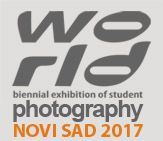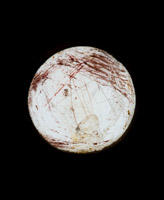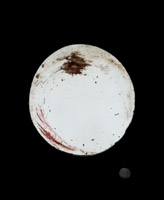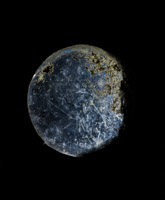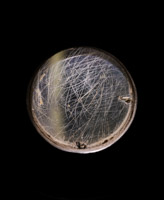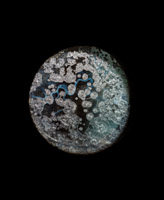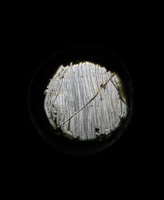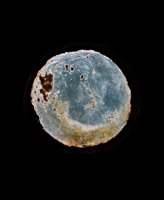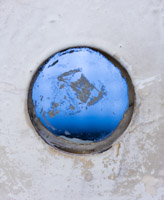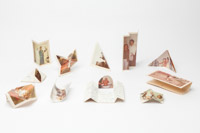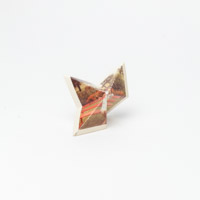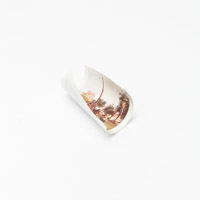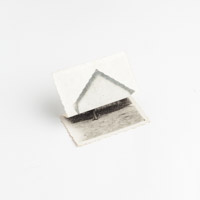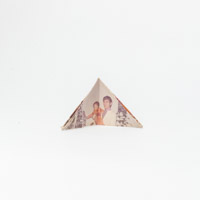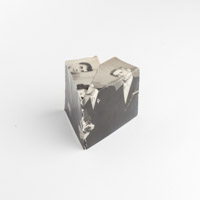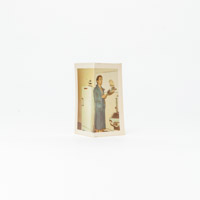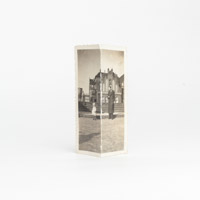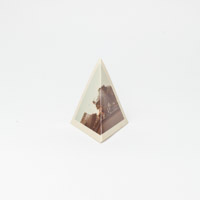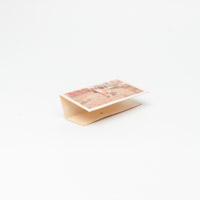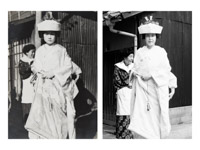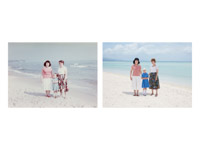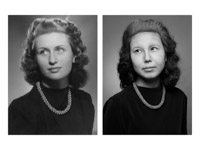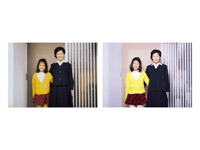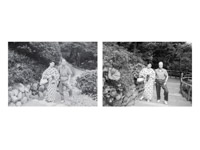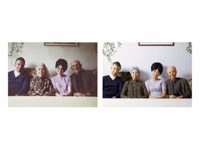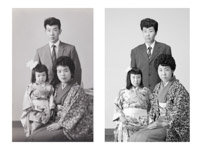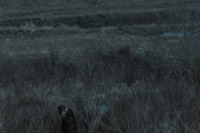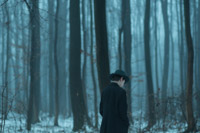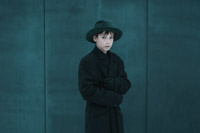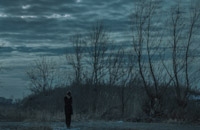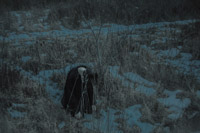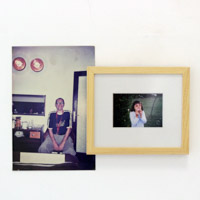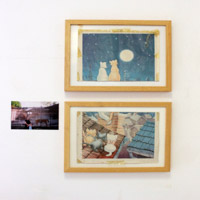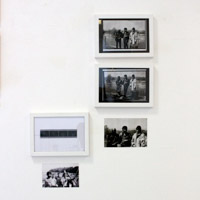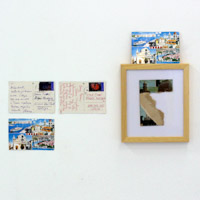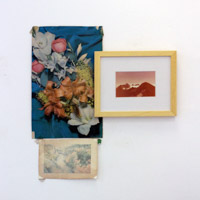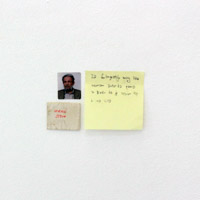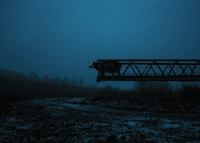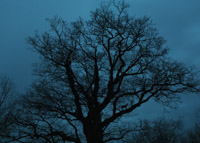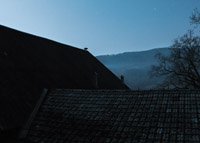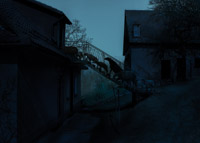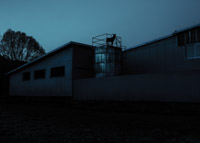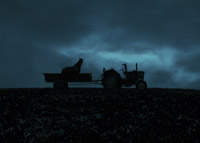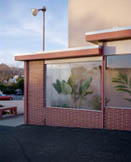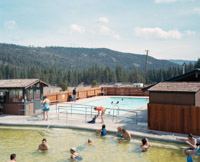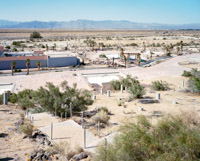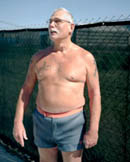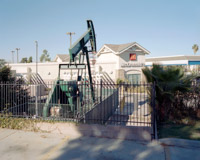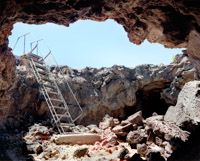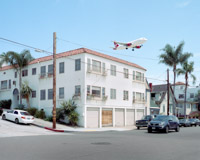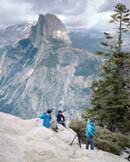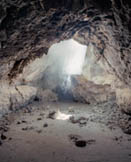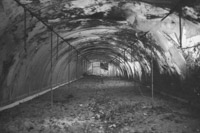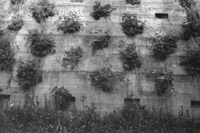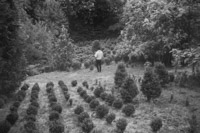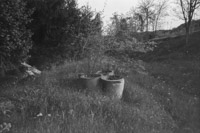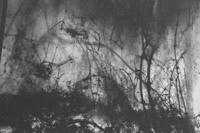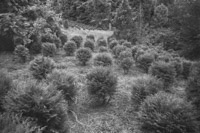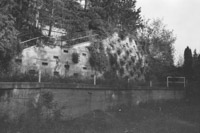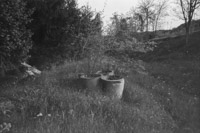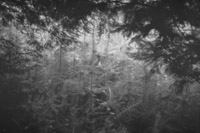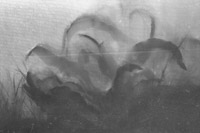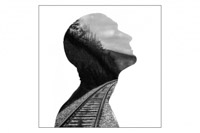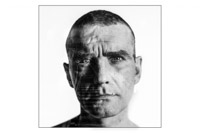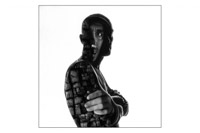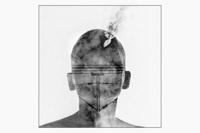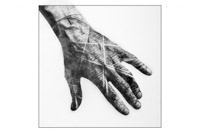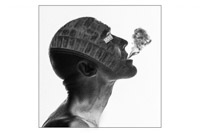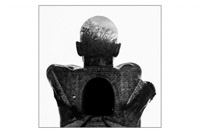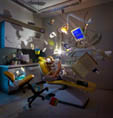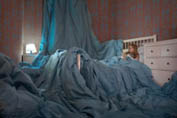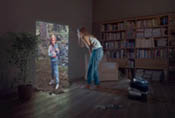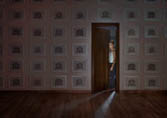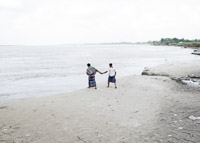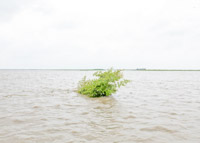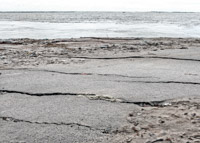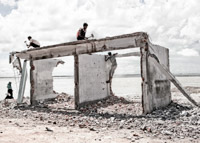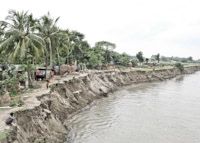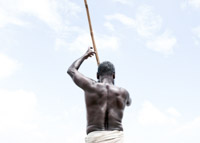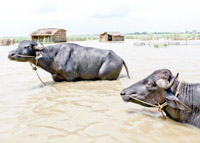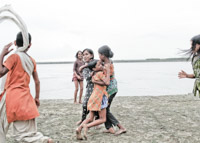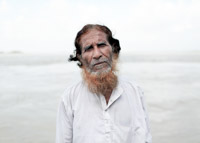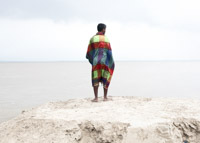1st PLACE
Valentyn Odnoviun
Vilnius Academy of Arts, LithuaniaProject Name: SURVEILLANCE
Description: The project "Surveillance" presented here, consist of the photographs of the walking yard and prison cell door spyholes in former KGB headquarters in Vilnius, Lithuania; Riga and Cesis, Latvia; Tallinn, Estonia; Lviv, Ukraine and STASI "Hohenschonhausen" remand prison in Berlin, Germany. KGB (Committee for State Security,) was the main security agency for the Soviet Union till its collapse in 1991. KGB prison cells became a places for political prisoners and objectionable "unwanted" people for their dissent and "anti-Soviet activities." The same places in the Baltic states and Ukraine were used for similar purposes by the Nazi Gestapo, when these countries were under German occupation during WWII. STASI (Ministry for State Security,) was the official state security service of East Germany which was part of the Soviet bloc until reunification of Germany in 1990. The main task of STASI was spying on the population through a vast network of informants, and fighting opposition, dissidents and "hostile elements." All oppressive systems used the same methods which they developed with time based on common experience.
2nd PLACE
Miljan Vuletić
Faculty of Art and Design at Jan Evangelista Purkyne University in Ústí nad Labem, Czech RepublicProject Name: Little Monuments
Description: Photographs used in this project come from an album of an unknown Yugoslavian family. By taking a single specimen from the social system, a civilian family, and with gestures of folding, piercing and overlapping it's intended to elevate its private to the status of public, in the form of a monument. This kind of connection imposes a contrast between the singular nature of family photographs and the plurality of public, massive, collective signifiers of social values. Two ends find its parallel in the moment these photographs were made, when their recording and archiving was closer to a ceremony or a ritual; and the culture of monuments, very popular in the ex-Yugoslavia, by which collective tributes were given to people as an anonymous group. In that way these photo-objects function as miniature memorials to an unknown, universal citizen. By thematic selection they glorify everyday events of his private history and the basic purpose of photography - recording the past, and in representation they critique the practice reserved for cases of great importance. Terms like past, history and memory are questioned through this work with juxtaposition of micro and macro narratives from one vanished social reality.
3rd PLACE
Rie Yamada
Berlin Weissensee School of Art, GermanyProject Name: Becoming a Family
Description: (Re)construction of intimate and personal moments through self-portraits: "Familie werden" ("Becoming a Family"). Using old, found photographs of ten families - five from Germany and five from Japan - I humorously recreated the past, simultaneously as photographer and model. Foundations of a family are made up of stories built upon memories. Moreover, the notion of a family is historically and culturally universal. Thus, family photographs of even complete strangers reflect the viewer's own experiences and memories and evoke a certain nostalgia and empathy. Family albums are usually put together by a family member, often to document a certain chapter or for a particular purpose. In a way, the stories of these ten families also have come to a new chapter, where their stories are carried forward by the hands of a stranger. I slink into their stories and become part of the family. The stories of these families weave in and out of memory and oblivion, fiction and reality. This project brings back to life these family photographs, which once had been left behind.
Milica Drinić
Faculty of Dramatic Arts, Belgrade, SerbiaProject Name: Growing up
Description: This photographic series was part of the exam with the topic "Documentary, stylization, abstraction" at the Faculty of Dramatic Arts in Belgrade. Inspired by the artist Sally Mann, I have started exploring the genre of portrait, led by her methodology, which includes exploration and documentation of one's own intimacy. In the series "Growing up" the subject is Ognjen, aged 14, who finds himself in spaces that, by their atmosphere and colors, resemble a distant past. In this way I sought to depict the surreal gaze of the subject, who finds the world unfamiliar and uncanny.
Ivana Čavić
Academy of Arts University of Novi Sad, SerbiaProject Name: Diary
Description: "Dnevnik" (Diary) is an installation work consisting of photographic material found in local newspaper institution 'Dnevnik' and my personal archive. Combining personal and found objects I wanted to recreate the feeling of memory and its unclear boundary between real and fictional. Photographs are showing installation views of fictional diary fragments (visual narratives) of found material and personal photographs that also explore the changeability of meaning and context.
Adam Żądło
Jan Matejko Academy of Fine Arts in Cracow, PolandProject Name: Deserted village
Description: "And yet this lack of cows, however rational it may be, gives one the feeling that the fields and meadows, deprived of their phlegmatic, bemusedly ruminating presence, are pitifully empty".
Stanislaw Lem's THE FUTUROLOGICAL CONGRESS - a sci-fi novel from 1971
Some of these animals I actually photographed in places where they stuck in these pictures. The rest was reassembled from my old, archived photographs and placed into traumatic scenery near our farm. It was the only possibility. These animals are no longer alive and I wanted to tell their stories. Their fates show the transformation that takes place on our farm, in the whole village and in our minds.
Shawn Bush
Rhode Island School of Design, USAProject Name: A Golden State
Description: Since the American Western landscape was first settled it has captivated the hearts of Americans and non-Americans alike. The expansive topography that dominates the territory encapsulates the allure of defining American ideologies. Cinema, habitual media and commercial industries use the seduction of the Western landscape to sell, define and project a merit of social status. In the name of progress, the topography is constantly changing and shedding its layers to suit the conditional needs of humanity. Employing some of the tactics of cinema that have been used to describe the landscape, A Golden State questions the relationship of prescriptive identity to place.
Igor Šiler
Academy of Arts University of Novi Sad, SerbiaProject Name: Homo Faber - Gardens
Description: The book "Homo Faber - Gardens" explores the relationship between man and work. My answer provides a wider understanding of this topic, where instead of the literal presentation of a man at work I am exploring the results and remains of work and its impact on the environment. The book also sets out other, more important, existential questions.
Boško Đorđević
Faculty of Dramatic Arts, Belgrade, SerbiaProject Name: P.
Description: "P." is a portrait. It is originally a small whole within a photography series titled "A train called Home" about a group of homeless people who found a temporary home in one of old abandoned train wagons on the railroads of Belgrade. The photographs are double exposures of a series of studio portraits of the subject and that which shaped his surroundings during the last years. "P." is about a friend. We met by accident, when, while location scouting for a student assignment, I stumbled upon their wagon. And that is what everyone called it, just Wagon. The group of abandoned train compositions caught my eye months earlier, during one of my trips back to Belgrade. The first encounter, though started with distrust and caution on both sides, quickly turned into kindness and hospitality. After that evening, in time, I started visiting the Wagon more often, and occasionally hung out with P. and the rest at other places in the city. During that period I made the first photographs. This series was made in January 2016, when P. agreed to help me with a photography project for the faculty. He passed away in the Wagon in March 2017.
Maria Siormpa
Athens School of Fine Arts, Athens, GreeceProject Name: Realisation
Description: In my images I present myself in exaggerated situations, unreal for the the human eye but real for what is going on inside me. Choosing to finally respect my natural love for imagination and dreams, I felt the need to share and speak about some of my mind's exaggerations. While self-portraiting, I wanted to let more than a female figure and her background be visible. I let images of my imagination free and visible around my personal environment aiming to understand, underline and secure their value.
Mohammad Rakibul Hasan
University of Oxford, UKProject Name: Wave
Description: As one of the major victims of the anthropogenic climate change, Bangladesh is experiencing variable climatic conditions. Bangladesh is a small, yet overpopulated country in Southeast Asia with largely an agro-based economy. Besides, climatic hazards like cyclone, flood, drought, soil salinity and river erosions are more frequent now a day. These two facts contribute to the increasing number of climate refugees who are forced to migrate to the cities, worsening the socio-economic problems. The barrages built across the rivers inside the border of India have resulted in both flooding and drying of the riverbeds in Bangladesh. Major rivers like Padma, Jamuna, Meghna, Brahmaputra and smaller rivers in the coastal region erode massively when the water level rise. Due to prolonged draughts, the temperature is increasing every year at an alarming rate. Sadly, people can't adapt to this rapidly changing climate and are on the brink of socio-economic insecurity. The waves whether present or absent, don't bring any hope for these people. When they hit, they take away the valuable land and livings. When the waves are gone, nothing is left but parched, cracked riverbeds.
Ana Melentijević, Faculty of Dramatic Arts Belgrade, Serbia
Anna Shulyateva, Dok Dok Dok, School of Documentary Photography and Photojournalism, Saint-Petersburg, Russia
Carolina Dutca, Academy of Photojournalism and Documentary photography Fotografika, Saint-Petersburg, Russia
Diana Baidal Morell, L'École nationale supérieure de la photographie (ENSP), Arles, France
Dimitriy Levdanski, ELISAVA School of Design and Engineering, Barcelona, Spain
Đurđina Tomić, Faculty of Dramatic Arts, Belgrade, Serbia
Ekaterina Muromtseva, Rodchenko Moscow School of Photography and Multimedia, Russia
Pavel Matousek, Faculty of Art and Design at Jan Evangelista Purkyně University in Ústí nad Labem, Czech Republic
Pedro Moreno, University of Los Andes, Mérida, Venezuela
Peter Lančarič, University of St. Cyril and Methodius, Trnava, Slovakia
Teodora Ivkov, Academy of Arts University of Novi Sad, Serbia

